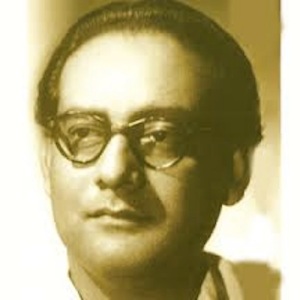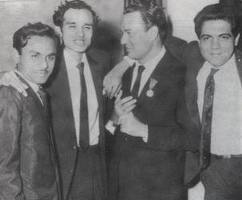My earlier posts on Kalyanji-Anandji (see Kalyanji-Anandji in categories to your right) covered 5 different dimensions of their music. In this post, I will summarize notable films, songs, achievements and key recognitions that highlight their versatile talent. I will also discuss their distinctive composing style and more importantly, highlight their personal nature and why they are immortal.
Click on the play arrow below to enjoy some of their finest songs from the 60s and 70s. On repeated plays, the player automatically shuffles songs.
(The player stops playing when you click the back button or go to another link on this page or somewhere else. This happens because the player is embedded on this page. To listen to these songs without any break, open another window after clicking the play arrow on the player. If you want to browse further on this site or another site, use the newly opened window. The player will keep playing the songs as you browse in the new window).
Ascending 60s
From 1958 when Kalyanji started out solo, they delivered musical hits through the 1960s. Songs from their early movies like Samrat Chandragupt, Post box 999, Passport, Bedard Zamana Kya Jaane, Satta Bazaar and Madari were melodious hits and continue to delight listeners even after 50 years. (Satta Bazaar was the first film in which Anandji joined his brother as the duo. Earlier, Anandji was assisting Kalyanji). They produced melodious songs in each film regardless of the hero or association with a big-ticket name. Whether it is Mehmood in Pyaase Panchi or Helen in Sunehri Nagin playing romantic roles, they composed memorable songs for them. A Sunehri Nagin duet Milke bhi hum features Talat Mahmood and his lovely dulcet voice. Dil bhi Tera Hum Bhi Tere was notable for its poignant Mukesh numbers. Mehndi lagi mere hath, Ji Chahta hai, Saheli, Ishara, Purnima, Raaz, Parivar and Suhaag Raat also had melodious songs.

They were not the primary music directors for any of the top heroes like Raj Kapoor, Dilip Kumar, Dev Anand. Despite this, they gained popularity with each passing year. When they got breaks to compose music for films starring the Kapoor brothers, they delivered musical hits – Chalia, Dulha Dulhan (Raj Kapoor), Bluff master (Shammi Kapoor), Dil ne Pukara, Haseena maan jayegi, Jab Jab phool khile and Aamne Saamne (Shashi Kapoor). Many piano and western numbers in these films added an alluring appeal to the image of sophisticated and good looking Shashi Kapoor. With Dev Anand as well, they had a musical hit in Mahal.
Their high quality, melodious and memorable music in Himalay ki goud mein, Upkar,

Saraswati Chandra and Vishwas gave them enviable recognition from peers and critics and provided additional momentum to their ascent to the top tier by the end of 1960s. They were focused on melodic content and lyrics in their songs in the 60s. Some of their songs in the 60s became iconic songs with immediate recall and association with popular festivals and national days that symbolized patriotic fervor (example:
Govinda aa laa re from Bluffmaster,
Mere desh ki dharti from Upkar).
Dominant 70s
As a carry over of the ‘non violent’ themes from 1960s, the year 1970 saw their movies like Geet, Yaadgar, Mere humsafar, Purab aur Paschim stand out for extremely melodious, soulful and appealing songs. Kalyanji-Anandji also rode the Rajesh Khanna wave in the early 70s with Safar, Sachha Jhootha, Maryada. Zindagi ka safar and Jeevan se bhari from Safar are among Kishore Kumar’s best songs. The haunting prelude toJeevan se bhari is a great example of silken sitar melody, heavenly flute and superb orchestration.
Vijay Anand’s Johny Mera Naam was a big-ticket film in 1970 that set the trend for crime movies during the 70s. Kalyanji-Anandji showed that you can deliver a block buster musical hit even in a crime dominated movie. Apart from the songs that were hugely popular, Kalyanji-Anandji showed a distinctive flair for composing catchy title music. The title music of Johny Mera Naam stood out for its appealing tune and superb orchestration. They went on to compose appealing title music for a number of other movies like Dharmatma, Victoria No 203 and Professor Pyarelal. Kalyanji-Anandji also had another musical hit in Vijay Anand directed Blackmail as well as the Vijay Anand starrer Kora Kagaz.
During the 1970s, Babla (younger brother of Kalyanji-Anandji) added an attractive

dimension to Kalyanji-Anandji’s music as their assistant. A wizard with percussion instruments and a master of rhythm, he introduced several innovative elements to their films. Instead of the traditional background music for suspense or crime scenes, Babla used bongo to provide a distinctive appeal in Victoria No. 203. In addition, a number of their movies featured haunting background music (Example: Dharmatma). In a later post, I will discuss more innovations by Babla.
Kalyanji-Anandji scored music for Zanjeer which marked the entry of Amitabh Bacchan, who became a one man industry for many years. They also scored music for many other Amitabh blockbusters in the 1970s including Don, Muqaddar Ka Sikandar, Hera Pheri. Kasauti stands out for an unusual Kishore number Hum bolega to bologe ki with interesting sounds and a different style of singing.
Even in the predominantly ‘crime movies’ trend of the 1970s, Kalyanji-Anandji were able to make their music stand out with a distinctive appeal. Johny Mera Naam, Haath Ki

Safai, Apradh, Dharmatma, Banarasi Babu featured lovely duets that became huge hits. In the 60s, Kalyanji-Anandji composed melodies predominantly with an Indian base, at the same time scoring with popular western tunes (example:
Nain milakarfrom Aamne Saamne). However, in the 1970s (especially after 1974) they adapted easily to the popular tastes and made their compositions predominantly western.
In the 1970s they had huge hits with Bollywood masala films or ‘pot boilers’. It would be a mistake to identify Kalyanji-Anandji only with these pot boilers, since the 50s and 60s saw them at their best with lovely melodies for social, romantic and family themes. Unfortunately, some people remember Kalyanji-Anandji only for their hits in the 1970s (and love them for it), but are ignorant of the duo’s melodious music of the 50s and 60s.
Like the 1960s, they also had iconic songs in the 1970s like Meri pyari behna (Sachcha Jhootha), which is normally played by bands in every wedding. Except for a couple of years in the 1970s, they had big hits throughout the 1970s. They dominated the 1970s along with R D Burman and Laxmikant-Pyarelal.
Retirement precursors
After their dominant run in the 70s, they entered the 80s with a block-buster hit in Qurbani. The trend of using instruments from the Middle East, which started with Dharmatma, continued in Qurbani. 1981 saw another block-buster hit in Laawaris. Vidhaata, Yudh, Kalaakaar and Jaanbaz were also notable for their music in the 80s. But then, musical hits became fewer as they progressed through the 1980s. Though their career technically continued till 1994, Tridev in 1989 can be considered their swan song. It is perhaps fitting that Kalyanji-Anandji chose to retire when they did, with pleasant memories in everyone’s mind.
Refreshingly different
While Kalyanji-Anandji delivered many memorable songs with Lata, Mukesh, Kishore and Rafi they composed lovely melodies for other leading singers as well. Suman Kalyanpur sounded very Lata like in Man mera tujhko (Paras). Two of Mahendra Kapoor’s best songs are the iconic Mere Desh ki dharti (Upkar) and Hai preet jahan ki reet(Purab aur Paschim). Nadiya chale chale re dhara (Safar) is a lovely wavy composition for Manna Dey with the pleasing sound of water. One of my favourite Asha songs is Ae Naujawan (Apradh) with lovely fusion music. In Bluffmaster, while Rafi was ‘Shammi’s voice’ by default, they used Mukesh and Hemant Kumar as well on Shammi Kapoor. And to top it all, in the same movie, they used Shamshad Begum also on Shammi Kapoor when he was disguised as a ‘woman’, making it a unique case of four singers for Shammi Kapoor in the same film!
They also composed unusual or different songs for some special situations. The song Yeh do deewane milke from Johar Mehmood in Goa is a comic situation with the jail referred to as ‘Sasural’. This song was on everyone’s lips for a long time. And in Ek tha gul aur (Jab Jab phool khile) they make a story recital very musical with lovely interludes, rhythm and words.
Distinctive style
Over their career, the duo composed innumerable songs in a variety of genres, styles and themes. Since their songs covered a wide range, we cannot pinpoint a common pattern that stands out distinctly as their style. Kalyanji-Anandji seemed to get absorbed in the situation and could compose simple and melodious songs that accentuated the emotions in the lyrics very well. Their sad songs were haunting and poignant. In other situations that called for expressions of joy, they seemed to revel in the mood and created breezy numbers and sometimes boisterous ones as well.
However, over the years, I noticed some distinct preferences that can be called their signature style. Apart from simple melodies that accentuated the lyrics, they paid close attention to instrument arrangements as well. Often, they would choose specific instruments that are very distinctive and delightful for the ear as well as on the screen. This combination of simple melody, touching lyrics and attractively orchestrated presentation gave most of their songs a classy and sophisticated feel. Observe the instruments and effects in the
two Mukesh solos in

Himalay ki goud mein or the hilly orchestration in
Ek tha gul (Jab Jab phool khile). Also, notice how a lovely Indian melody in
Wada karle saajna (Haath ki safai) was attractively presented with a touch of class using saxophone, piano and plucked string instruments.
A number of their songs had elongated notes at the end in the mukhda, antara or both(example: Babul Pyaare from Johny Mera Naam or O Saathi re from Muqaddar Ka Sikandar). These elongated notes, sometimes with a little murki at the end became their signature. In other inspired songs, they used a limited range of notes in the octave with a smooth transition from one note to the adjacent one (observe Ham the jinke sahare from Safar or Sama hai suhana from Ghar Ghar ki kahani). This made their songs soft, soothing and melodious. They maintained a fine balance between vocals and orchestration, Indian and western styles, and made their tunes simple and appealing. In earlier posts, I highlighted other distinctive features like their mastery over string instruments, the use of chorus for rhythm, the lingering preludes and the ‘pause-start’ tempo pick up, which are integral to their composing style. Rajan-Nagendra a famous composing duo in South Indian film music were called ‘Kalyanji-Anandji’ of the south because of the fine blend of melody, instrument arrangements, preference for string instruments and lovely orchestration.

Kalyanji-Anandji could compose delightful light classical songs and at the same time could turn out the most sophisticated western songs with superb orchestration. A number of their songs also had a lovely blend of rhythm and melody. Finely balanced and truly versatile, is an apt summary of their style.
Large hearts
There are innumerable instances of how they readily organized numerous shows to support causes like relief for victims of natural disasters like earthquakes. Kalyanji-Anandji would be the first name that came to mind for a charitable purpose. In addition, they also showed a large heart when it came to recognition for their core team. In the late 1960s and throughout 1970s, it was quite common to see the following as credits on a separate card in the movie titles.
Music assistant: Babla
Arranged by: Jaikumar Parte
Conducted by: Frank Fernand
These 3 were the foundation for their music hits. Sometimes the three changed roles, but together as a team, they provided Kalyanji-Anandji with innovative and ‘top of the line’ professional support to make their movies musical hits.
Another indication of their large hearted nature is their association with ‘first time’

directors. They did not see such associations as risky and guaranteed musical success for someone starting out on their first directorial venture. Manmohan Desai, Sultan Ahmed, Prakash Mehra, Arjun Hingorani, Subhash Ghai, Feroz Khan, Manoj Kumar, Chandra Barot had huge hits with Kalyanji-Anandji in their debut movies as directors. They were also associated with debutant lyricists like Gulshan Bawra, M G Hashmat, Anjaan. A majority of their soulful and popular numbers had lyrics by Indeevar though they also worked with other famous lyricists.
Kalyanji-Anandji also believed that they will receive whatever they are destined to and no one can rob them of their destiny. This philosophy made them large hearted, selfless. They did not push themselves or seek publicity or recognition by aggressive means. Perhaps this is the reason why they are the most underrated composers. They let their music and stupendous deeds do all the talking for them.
Multiple recognitions
Songs listed in the earlier posts and included in the player in this post total more than 100. All of these songs are high quality, hugely popular and evergreen that appeal to the old and the young alike. There are also perhaps another 100 or more songs that are also hugely popular, though I may not have listed them in this blog. These melodious, popular and chartbuster songs enabled Kalyanji-Anandji to gather several awards and recognitions, including peer awards and government recognition like the Padmasri.
But, perhaps their best recognition came long after they retired! The internationally acclaimed group Black Eyed Peas included tunes (with full credit to Kalyanji-Anandji) from two of their biggest hits (Yeh mera dil from Don and Ae naujawan from Apradh) in their song Don’t phunk with my heart. This song won a Grammy Award and Anandji was felicitated by BMI (Broadcast Music, Inc) on behalf of the duo in 2006, several years after their retirement! This perhaps is a recognition of the evergreen appeal of Kalyanji-Anandji’s music not only to the younger generation but also to a substantial international population. Several of their hits were remade in multiple languages, remixed, and featured in advertisements on TV.
Immortal duo
Kalyanji-Anandji were hugely popular as composers, but other composers were popular as well. While their shows for charitable causes are well remembered, they are not the only composers who helped in such causes. As they climbed the ladder of success, they achieved fame, popularity and of course material rewards for their hugely successful music blockbusters.

Alka Yagnik
But, Kalyanji-Anandji did not limit their vision to composing melodious music and steadily rising on the recognition or popularity graph. They had a broader vision of contributing with a permanent and everlasting legacy of spotting, grooming and providing singing talent for the music industry. They would encourage child singers and any other singer they spotted to hone their skills and talent to be among the best. Their commitment to this cause did not stop with mere advice or encouragement. They invested a substantial portion of their time, money and energy for the single minded purpose of promoting singing talent. They created schools, groups (like Little Wonders, Little Stars) that focused only on encouraging talent and giving them exposure through shows. It is this zeal, passion and vision to contribute to the larger music industry, which makes them stand out from the rest. Alka Yagnik, Sadhana Sargam, Sunidhi Chauhan, Kumar Sanu, Sapna Mukherjee, Manhar Udhas, Babul Supriyo are among the many singers who were spotted, encouraged, groomed and given a break by Kalyanji-Anandji. Some like Sadhana Sargam and Sunidhi Chauhan were children when their talent was spotted by Kalyanji-Anandji. As Babul Supriyo said in his Times Now interview on July 7 2013, it is this selfless sacrifice and commitment for the larger cause of the music industry that made Kalyanji-Anandji immortal.
The multifaceted talents of these two maestros created many unforgettable and impactful songs in film music. Their evergreen music lives on through their songs, but their legacy lives on throughout the entire film music industry through their protégés. My humble salutations to this immortal and cheerful duo who worked selflessly and put others before themselves.

Sunidhi Chauhan

Sadhana Sargam





 A Guitar is perhaps the only instrument that almost everyone “plays”. Quite often, we see someone “playing” an ‘Air-Guitar’ (acting as though you are playing the Guitar with both hands, but without any real instrument!). I am sure you would have “played” air-guitar at least a few times and perhaps often. I guess most of the songs accompanied by the air-guitar were lively and energetic ones!
A Guitar is perhaps the only instrument that almost everyone “plays”. Quite often, we see someone “playing” an ‘Air-Guitar’ (acting as though you are playing the Guitar with both hands, but without any real instrument!). I am sure you would have “played” air-guitar at least a few times and perhaps often. I guess most of the songs accompanied by the air-guitar were lively and energetic ones!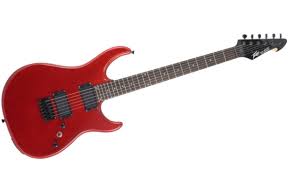
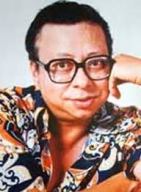
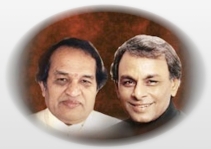

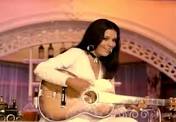 R D Burman used guitar beautifully in Churaliya hai tumne (Yaadon ki baaraat) – guitar played by
R D Burman used guitar beautifully in Churaliya hai tumne (Yaadon ki baaraat) – guitar played by 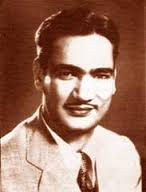
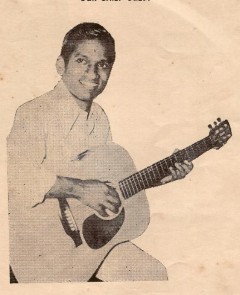 become an all-time classic in South Indian film music. S P Balasubrahmanyam, makes this an easy and soothing song to the ears with his mellifluous voice. S P Balasubrahmanyam also recounts an anecdote about the recording of this song. Apparently, this song was okayed after 16 takes because Ilayaraja, the perfectionist, wanted the right notes from the guitar and the guitarist
become an all-time classic in South Indian film music. S P Balasubrahmanyam, makes this an easy and soothing song to the ears with his mellifluous voice. S P Balasubrahmanyam also recounts an anecdote about the recording of this song. Apparently, this song was okayed after 16 takes because Ilayaraja, the perfectionist, wanted the right notes from the guitar and the guitarist interludes, there is a beautiful amalgam of sitar playing to the beats of tabla and drums. This song incidentally was the inspiration for a song that won a Grammy award! (Black Eyed peas used this song as the basis for their song Don’t phunk with my heart. Black Eyed Peas acknowledged the original creators Kalyanji-Anandji in this song.). However, I will use the term Fusion in this post to mean something totally different from a mere fusion of instrumental music.
interludes, there is a beautiful amalgam of sitar playing to the beats of tabla and drums. This song incidentally was the inspiration for a song that won a Grammy award! (Black Eyed peas used this song as the basis for their song Don’t phunk with my heart. Black Eyed Peas acknowledged the original creators Kalyanji-Anandji in this song.). However, I will use the term Fusion in this post to mean something totally different from a mere fusion of instrumental music. In the context of Hindi film songs, I will use the term Fusion to mean a mix of two different singing styles in the vocals in the same song.
In the context of Hindi film songs, I will use the term Fusion to mean a mix of two different singing styles in the vocals in the same song.
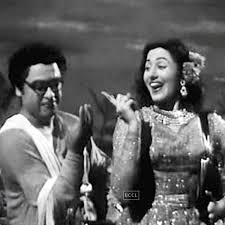
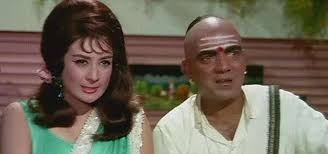
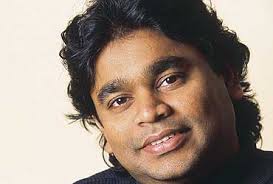

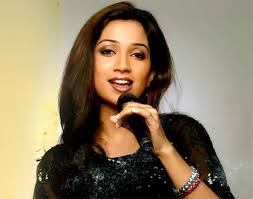 t crop of composers. Pritam did a wonderful job with the melodious fusion of a western song with Atif’s singing in Tera hone lagaa (Ajab prem ki ghazab kahani). Shreya Ghoshal was delightfully sweet in Vishal-Shekar’s Bahara Bahara hua dil pehli baar ve (I hate luv stories). This song is a melodious fusion of folk and romantic styles and is very soothing to the ears. Among the many songs that have bits of folk songs mixed with the main melody, this song can perhaps be rated among the best.
t crop of composers. Pritam did a wonderful job with the melodious fusion of a western song with Atif’s singing in Tera hone lagaa (Ajab prem ki ghazab kahani). Shreya Ghoshal was delightfully sweet in Vishal-Shekar’s Bahara Bahara hua dil pehli baar ve (I hate luv stories). This song is a melodious fusion of folk and romantic styles and is very soothing to the ears. Among the many songs that have bits of folk songs mixed with the main melody, this song can perhaps be rated among the best.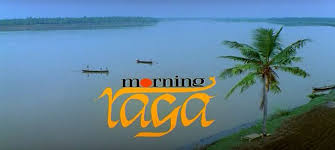

 discrete note. The pioneering musician, Cawas Lord was instrumental in introducing them to Hindi film music. He and his son Kersi Lord played the instrument in several songs. Later, percussionists like Homi Mullan also played Castanets in a number of songs.
discrete note. The pioneering musician, Cawas Lord was instrumental in introducing them to Hindi film music. He and his son Kersi Lord played the instrument in several songs. Later, percussionists like Homi Mullan also played Castanets in a number of songs.
 Madan Mohan, the king of soulful melodies showed the ‘western ‘ side of his music in Thodi der ke liye mere ho jao(Akeli mat jaiyo) that makes extensive use of Castanets.
Madan Mohan, the king of soulful melodies showed the ‘western ‘ side of his music in Thodi der ke liye mere ho jao(Akeli mat jaiyo) that makes extensive use of Castanets. effortlessly and Mohd Rafi sings with a twist in his vocals. R D Burman also contributed to this song with his claps in the prelude, which is a delightful mix of Arabian and Flamenco styles.
effortlessly and Mohd Rafi sings with a twist in his vocals. R D Burman also contributed to this song with his claps in the prelude, which is a delightful mix of Arabian and Flamenco styles.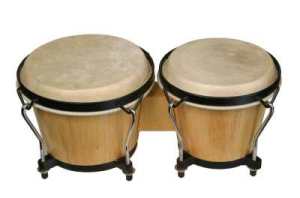
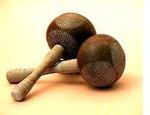
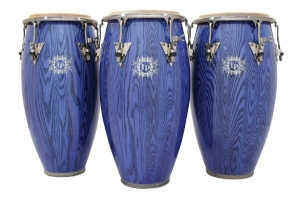
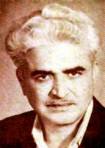

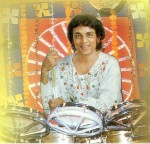
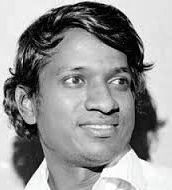
 instrument Mridangam in Saathi for an innovative and different type of western beat. Listen to these delightful beats in Mera pyaar bhi tu hai (by clicking the arrow below). You can hear these innovative beats throughout the vocal melody sung by Suman Kalyanpur and Mukesh. I must admit that there is no lead performance by rhythm in this song. I included it only to demonstrate innovation in western beats.
instrument Mridangam in Saathi for an innovative and different type of western beat. Listen to these delightful beats in Mera pyaar bhi tu hai (by clicking the arrow below). You can hear these innovative beats throughout the vocal melody sung by Suman Kalyanpur and Mukesh. I must admit that there is no lead performance by rhythm in this song. I included it only to demonstrate innovation in western beats.

 Saraswati Chandra and Vishwas gave them enviable recognition from peers and critics and provided additional momentum to their ascent to the top tier by the end of 1960s. They were focused on melodic content and lyrics in their songs in the 60s. Some of their songs in the 60s became iconic songs with immediate recall and association with popular festivals and national days that symbolized patriotic fervor (example:Govinda aa laa re from Bluffmaster, Mere desh ki dharti from Upkar).
Saraswati Chandra and Vishwas gave them enviable recognition from peers and critics and provided additional momentum to their ascent to the top tier by the end of 1960s. They were focused on melodic content and lyrics in their songs in the 60s. Some of their songs in the 60s became iconic songs with immediate recall and association with popular festivals and national days that symbolized patriotic fervor (example:Govinda aa laa re from Bluffmaster, Mere desh ki dharti from Upkar).
 dimension to Kalyanji-Anandji’s music as their assistant. A wizard with percussion instruments and a master of rhythm, he introduced several innovative elements to their films. Instead of the traditional background music for suspense or crime scenes, Babla used bongo to provide a distinctive appeal in Victoria No. 203. In addition, a number of their movies featured haunting background music (Example: Dharmatma). In a later post, I will discuss more innovations by Babla.
dimension to Kalyanji-Anandji’s music as their assistant. A wizard with percussion instruments and a master of rhythm, he introduced several innovative elements to their films. Instead of the traditional background music for suspense or crime scenes, Babla used bongo to provide a distinctive appeal in Victoria No. 203. In addition, a number of their movies featured haunting background music (Example: Dharmatma). In a later post, I will discuss more innovations by Babla.
 Safai, Apradh, Dharmatma, Banarasi Babu featured lovely duets that became huge hits. In the 60s, Kalyanji-Anandji composed melodies predominantly with an Indian base, at the same time scoring with popular western tunes (example: Nain milakarfrom Aamne Saamne). However, in the 1970s (especially after 1974) they adapted easily to the popular tastes and made their compositions predominantly western.
Safai, Apradh, Dharmatma, Banarasi Babu featured lovely duets that became huge hits. In the 60s, Kalyanji-Anandji composed melodies predominantly with an Indian base, at the same time scoring with popular western tunes (example: Nain milakarfrom Aamne Saamne). However, in the 1970s (especially after 1974) they adapted easily to the popular tastes and made their compositions predominantly western.


 Himalay ki goud mein or the hilly orchestration in Ek tha gul (Jab Jab phool khile). Also, notice how a lovely Indian melody in Wada karle saajna (Haath ki safai) was attractively presented with a touch of class using saxophone, piano and plucked string instruments.
Himalay ki goud mein or the hilly orchestration in Ek tha gul (Jab Jab phool khile). Also, notice how a lovely Indian melody in Wada karle saajna (Haath ki safai) was attractively presented with a touch of class using saxophone, piano and plucked string instruments.

 directors. They did not see such associations as risky and guaranteed musical success for someone starting out on their first directorial venture. Manmohan Desai, Sultan Ahmed, Prakash Mehra, Arjun Hingorani, Subhash Ghai, Feroz Khan, Manoj Kumar, Chandra Barot had huge hits with Kalyanji-Anandji in their debut movies as directors. They were also associated with debutant lyricists like Gulshan Bawra, M G Hashmat, Anjaan. A majority of their soulful and popular numbers had lyrics by Indeevar though they also worked with other famous lyricists.
directors. They did not see such associations as risky and guaranteed musical success for someone starting out on their first directorial venture. Manmohan Desai, Sultan Ahmed, Prakash Mehra, Arjun Hingorani, Subhash Ghai, Feroz Khan, Manoj Kumar, Chandra Barot had huge hits with Kalyanji-Anandji in their debut movies as directors. They were also associated with debutant lyricists like Gulshan Bawra, M G Hashmat, Anjaan. A majority of their soulful and popular numbers had lyrics by Indeevar though they also worked with other famous lyricists.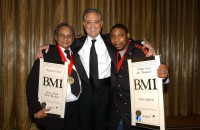









 Naushad’s music carries a strong flavor of folk music from UP, Rajasthan, Punjab and other parts of the northern belt. Rattan was a super hit and its folksy music became the craze all over the country. One of the reasons for such popularity was Naushad’s use of singers with a folksy twang like Zohrabai Ambalawali. Her Akhiyan milake is hugely popular even today. Of course, in later years, Naushad employed mainstream singers like Rafi and Lata for folk songs like Tan rang lo (Kohinoor). It needed all the professional skill and talents of a singer like Rafi to sing Nain lad jaihen re (Ganga Jamuna) in a chaste local dialect.
Naushad’s music carries a strong flavor of folk music from UP, Rajasthan, Punjab and other parts of the northern belt. Rattan was a super hit and its folksy music became the craze all over the country. One of the reasons for such popularity was Naushad’s use of singers with a folksy twang like Zohrabai Ambalawali. Her Akhiyan milake is hugely popular even today. Of course, in later years, Naushad employed mainstream singers like Rafi and Lata for folk songs like Tan rang lo (Kohinoor). It needed all the professional skill and talents of a singer like Rafi to sing Nain lad jaihen re (Ganga Jamuna) in a chaste local dialect. Naushad seemed to compose his songs with loving care. Being a perfectionist, he created songs that caressed the lyrics lovingly. Some of his songs were unhurried, languid spending a lot of time in bringing out the best in lyrics with an easy flow. As a result of this unhurried style, a number of his songs were graceful apart from being easy for the ears. Observe the two Dilip Kumar piano based numbers in Andaz (1949) and Ram aur Shyam (1967). Both Jhoom Jhoom ke (Andaz) and Aaj ki raat (Ram aur Shyam) seem to flow easily, lazily without any hurry whatsoever. His musical interludes also had the same unhurried and smooth, caressing flows. Lata’s Jogan ban jaaongi (Shabab) also seems to flow gracefully and easily throughout the song accompanied by the delightful flute. Even in a predominantly western song like Mujhe duniya walon (Leader), the musical interludes and the song flow easily as if Rafi had all the time in the world to sing the song. Perhaps this style of music reflects Dilip Kumar’s acting and dancing styles – measured, unhurried. Also, like Dilip Kumar’s dialogues – the impact is mesmerizing.
Naushad seemed to compose his songs with loving care. Being a perfectionist, he created songs that caressed the lyrics lovingly. Some of his songs were unhurried, languid spending a lot of time in bringing out the best in lyrics with an easy flow. As a result of this unhurried style, a number of his songs were graceful apart from being easy for the ears. Observe the two Dilip Kumar piano based numbers in Andaz (1949) and Ram aur Shyam (1967). Both Jhoom Jhoom ke (Andaz) and Aaj ki raat (Ram aur Shyam) seem to flow easily, lazily without any hurry whatsoever. His musical interludes also had the same unhurried and smooth, caressing flows. Lata’s Jogan ban jaaongi (Shabab) also seems to flow gracefully and easily throughout the song accompanied by the delightful flute. Even in a predominantly western song like Mujhe duniya walon (Leader), the musical interludes and the song flow easily as if Rafi had all the time in the world to sing the song. Perhaps this style of music reflects Dilip Kumar’s acting and dancing styles – measured, unhurried. Also, like Dilip Kumar’s dialogues – the impact is mesmerizing. There are many other reasons why Hemant Kumar’s music is haunting. One obvious reason is Hemant Kumar singing his own compositions. Blessed with a rich, deep and sonorous voice, his singing left a deep impression. When you hear his songs, you can feel the vibrations and deep resonance of his voice. When such a rich and resonant voice sings songs of yearning, love, wistfulness the effect can be very haunting. There are several songs that Hemant Kumar composed where he sang songs that are full of resonant humming and stress on a few notes like Tum pukar lo (Khamoshi) or songs that touch low notes and accentuate his deep resonant voice as in Ye nayan dare dare (Kohraa). In Tum pukar lo, the music, the humming, the ‘whistle’ and the words leave you spellbound. Similarly, the humming in Ye nayan dare dare leaves you enthralled. These two are perhaps the best examples of his resonance where you can feel the vibrations and humming long after the song is over. A similar song, but without humming is Ya dil ki suno (Anupama). The song without any percussion has Hemant Kumar resonating beautifully with its heart tugging melody. These songs keep playing in your head over and over again long after you finished listening to the songs.
There are many other reasons why Hemant Kumar’s music is haunting. One obvious reason is Hemant Kumar singing his own compositions. Blessed with a rich, deep and sonorous voice, his singing left a deep impression. When you hear his songs, you can feel the vibrations and deep resonance of his voice. When such a rich and resonant voice sings songs of yearning, love, wistfulness the effect can be very haunting. There are several songs that Hemant Kumar composed where he sang songs that are full of resonant humming and stress on a few notes like Tum pukar lo (Khamoshi) or songs that touch low notes and accentuate his deep resonant voice as in Ye nayan dare dare (Kohraa). In Tum pukar lo, the music, the humming, the ‘whistle’ and the words leave you spellbound. Similarly, the humming in Ye nayan dare dare leaves you enthralled. These two are perhaps the best examples of his resonance where you can feel the vibrations and humming long after the song is over. A similar song, but without humming is Ya dil ki suno (Anupama). The song without any percussion has Hemant Kumar resonating beautifully with its heart tugging melody. These songs keep playing in your head over and over again long after you finished listening to the songs.




